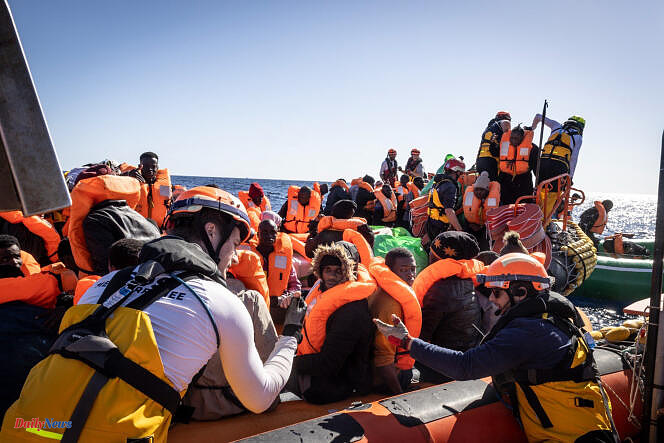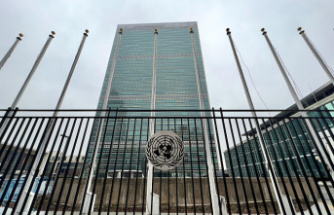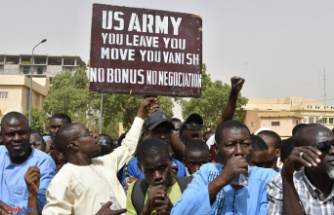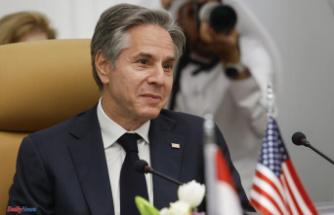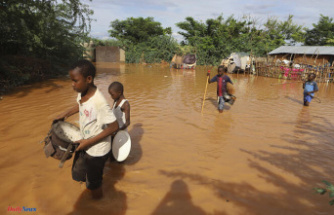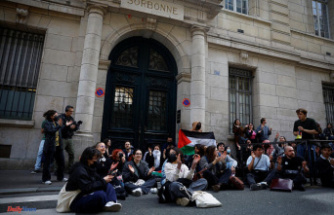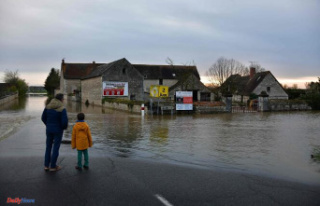It only took a few days of good weather for crossings in the central Mediterranean, between Tunisia, Libya and Italy, to start to rise again. Around five thousand people have arrived in Italy in the last two weeks, according to the United Nations High Commissioner for Refugees (UNHCR), almost as many as in the period from January 1 to March 10. Figures which, however, remain much lower than the more than 20,400 arrivals recorded between January and March 2023.
Elected in particular on an anti-migrant speech, the President of the Italian Council, Giorgia Meloni, and her government did not fail to welcome this decline. Their efforts, both nationally and internationally, they say, have led to a significant reduction in arrivals on the peninsula. “Serious work produces results,” rejoiced Interior Minister Matteo Piantedosi in an interview with the Milanese daily Il Foglio on March 20.
With just over 7,000 people disembarking between January and March, arrivals in Italy from Libya remain stable. On the other hand, they have decreased significantly since Tunisia. After an unprecedented wave in 2023, Tunisia has seen the departures of migrants and asylum seekers contract by 71% since the start of the year, after their living conditions there suddenly deteriorated following declarations of President Kaïs Saïed. The latter described in February 2023 the influx of sub-Saharan exiles as a “criminal enterprise” aimed at “changing the demographic composition of Tunisia”.
“Catastrophic humanitarian consequences”
Europe then mobilized at the highest level to try to stem migration from the Tunisian coast, culminating in the signing of a memorandum of understanding between Brussels and Tunis on July 16, 2023, including one of the sections concerns the fight against irregular immigration. Although Mr. Saïed reiterated that his country will not play the role of “border guard”, Tunisian law enforcement agencies have stepped up operations against smuggler networks and workshops manufacturing boats used for crossings, since the end of the previous summer.
At the same time, they continued the arbitrary arrests and expulsions of migrants and asylum seekers towards the borders of its neighbors. These have become “systematic” after each interception at sea according to the spokesperson for the Tunisian Forum for Economic and Social Rights (FTDES), Romdhane Ben Amor. Although documented by Le Monde and other media and denounced by several civil society organizations, these practices are continually denied by the Tunisian authorities.
The strengthening of migration control, supported by Brussels but also Paris and Rome, came at the cost of “catastrophic humanitarian consequences”, deplores Mr. Ben Amor. “On the one hand, with the drop in departures, migrants find themselves stuck in Tunisia, without the possibility of working or housing, in deplorable conditions. On the other hand, there is the alarming situation at sea with many deaths,” he underlines. Five bodies were recovered on March 9 during a Maritime National Guard operation, nine on February 15, thirteen a week earlier.
In this maritime zone between Libya and Italy, the situation is not much better: sixty people from a boat rescued by the NGO SOS Méditerranée on March 13 are missing. In total, at least 442 people have already drowned there since January, according to the International Organization for Migration (IOM). “Minimum estimates” which only take into account known shipwrecks, specifies the IOM.
Growing repression by Italian authorities
The images published by the German NGO Sea-Watch, filmed from its surveillance plane off the coast of Malta on March 24, showing an oil tanker flying the Panamanian flag engaged, in the absence of the competent authorities, in a delicate operation to rescue a makeshift boat carrying around forty migrants and trying to recover several of them, who had fallen into the water, demonstrate the lack of resources provided by States.
At the same time, the few NGOs trying to help migrants are facing increasing repression from the Italian authorities. Since the start of the year, at least five humanitarian ships have been blocked in ports on the peninsula: the Geo Barents of Médecins Sans Frontières, the Ocean Viking of SOS Méditerranée, the Sea-Watch 5 and the Humanity 1. eponymous NGOs. The Sea-Eye 4, the latest to undergo this sanction, was sentenced to sixty days of immobilization in Reggio Calabria, “the longest administrative detention ever imposed on a rescue ship at sea”, indicated the Sea-Eye organization, Monday, March 11.
Due to these obstacles, the Italian maritime authorities have for more than a year become accustomed to designating ports in the center and north of the country to disembark survivors rescued by NGOs. A practice that extends travel times and moves ships away from rescue zones. In a press release published on February 22, a group of NGOs denounced these “obstructions” which, according to them, contribute to “hindering search and rescue activities” causing an “increase in the number of deaths”.

